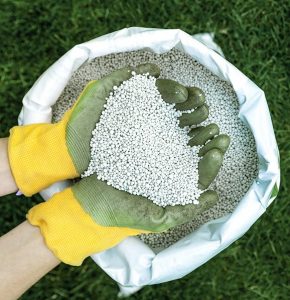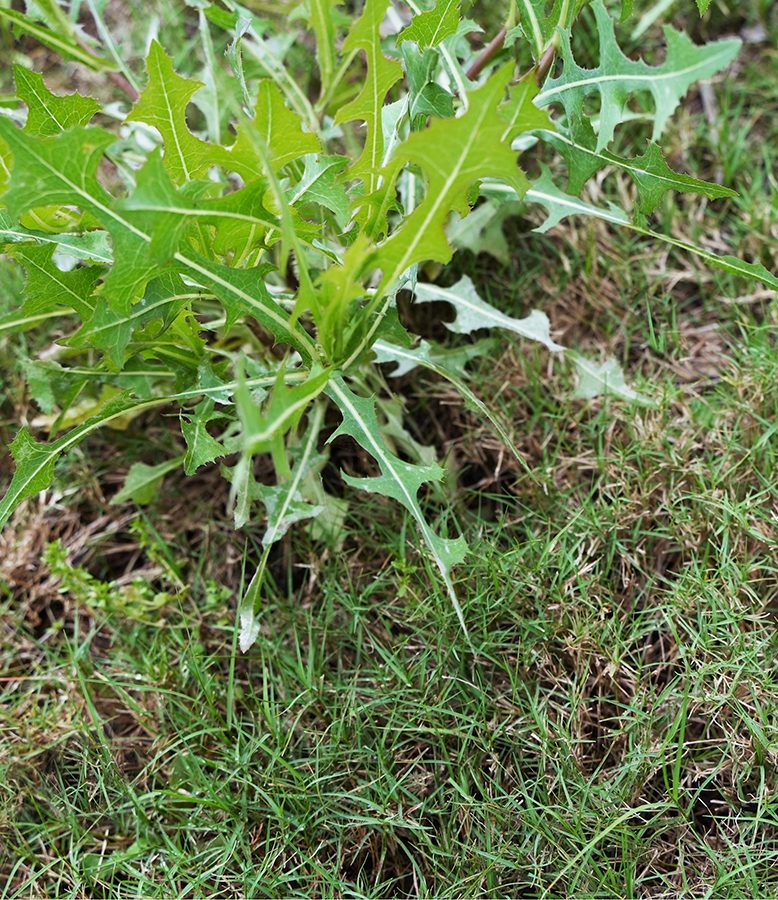San Antonio’s growing season doesn’t click with the application schedule for these products. Read on to learn more reasons not to weed and feed.
It’s spring and big box stores are bursting with Fiesta-colored bags of weed-and-feed fertilizer. At the same time, our yards are covered with overgrown leftovers of winter weeds.
What’s wrong with killing weeds and fertilizing grass at the same time? More importantly, why does weed and feed get such a bad rap from garden experts in San Antonio?
Weed-and-feed is a combination of fertilizer and herbicide with two basic formulations: granular or liquid.
 In granular form a fertilizer pellet is coated in herbicide, spread over the yard when it’s wet so the herbicide sticks to the leaves of whatever is growing, and once absorbed the fertilizer stays behind. Liquid formulations are typically mixed together and diluted to a level safe enough to spray with a garden hose.
In granular form a fertilizer pellet is coated in herbicide, spread over the yard when it’s wet so the herbicide sticks to the leaves of whatever is growing, and once absorbed the fertilizer stays behind. Liquid formulations are typically mixed together and diluted to a level safe enough to spray with a garden hose.
When these combinations are applied too heavily, you may see interesting patterns of damaged grass and other plants for months.
In addition, fertilizers can run off the property into local waterways and on towards the Gulf of Mexico. You’ll see such warnings on the label if you read far enough. Then there’s the difficulty in even selecting which product to use. A pre-emergent herbicide, systemic post-emergent herbicide, or a non-systemic chemical?
Also, are you comfortable with 2,4-D, atrazine or dicamba for your bare feet and those of your pets and children? And which ratio of fertilizer is best to combine with these options for your own landscape?
The good news: San Antonio’s pleasant late winter-early spring weather negates the need for weed and feed in the first place. Our growing season just doesn’t click with the application schedule for these products.
 During the wonderful weather of the last few weeks, local weeds have been growing gangbusters (bad time to feed them) and now in late spring, our warm-season Bermuda, St. Augustine and zoysia are growing too (not a good time to apply herbicide.)
During the wonderful weather of the last few weeks, local weeds have been growing gangbusters (bad time to feed them) and now in late spring, our warm-season Bermuda, St. Augustine and zoysia are growing too (not a good time to apply herbicide.)
Locally, the best time to apply pre-emergent herbicide (to keep winter weeds from sprouting in the first place) would be in September, while the best time to apply fertilizer is after April 15 (rule of thumb is after you’ve mowed the grass at least twice). Notice the discrepancy?
Putting them together with fertilizer and herbicide in a single weed-and-feed product — and then spreading it on your lawn — just cannot result in the intended effect. In San Antonio, herbicides and fertilizers should always be applied separately.
If you want to help your summer lawn, mow the grass at least twice before even considering fertilizer. Just mowing will effectively manage remaining winter weeds anyway, especially if started in March. By now, winter weeds like beggar ticks, bedstraw and sow thistle are already beginning to struggle with increasing temperatures and they’re already going to seed. There’s no need to waste time and money going after them with herbicide.
So, if you’re getting the backyard ready to host upcoming events, don’t be fooled into buying weed-and-feed. Your landscape will be happier — and look better — with flowers and party banners.
Viva Fiesta!


